How to Select the Right Omnichannel Platform: Checklist for Retailers in 2025
October 12, 2025
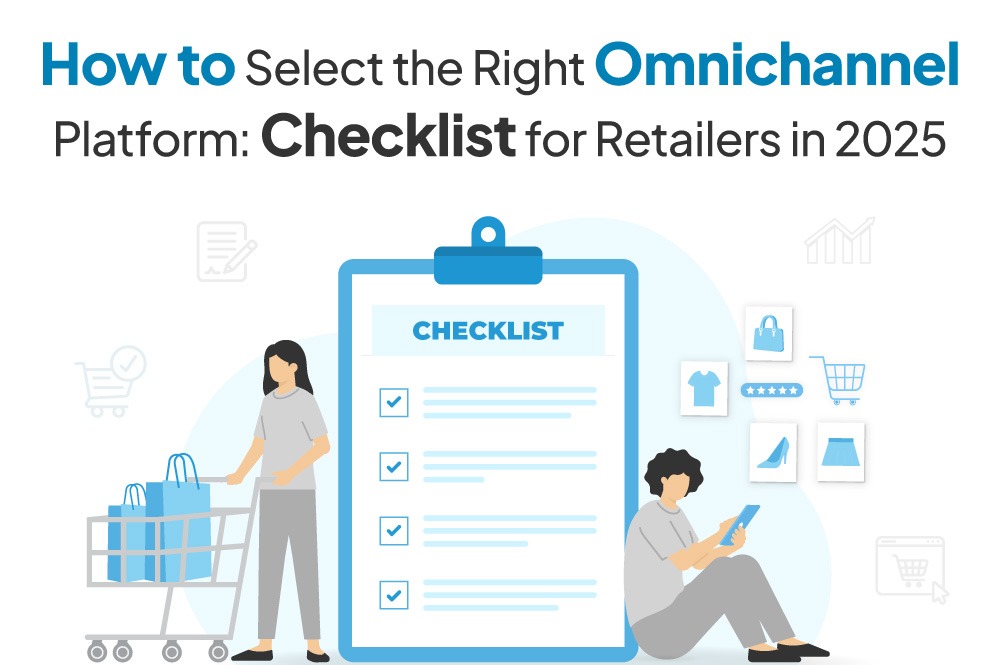
In 2025, retail is all about making things simple for customers and keeping things the same. Customers want the same level of service no matter how they buy, whether it is online, in-store, or through social media. This is why an omnichannel platform is now a necessity for modern stores. The appropriate solution can bring everything together, make the shopping experience better, and boost profits.
Businesses that do not have the correct system risk running out of stock, giving customers a bad experience, taking too long to fill orders, and losing revenue to competitors. This guide gives retailers a useful list of things to look for when assessing omnichannel platforms in 2025, which will help them choose the right technology for their business.
Here are some important reasons why omnichannel is important:
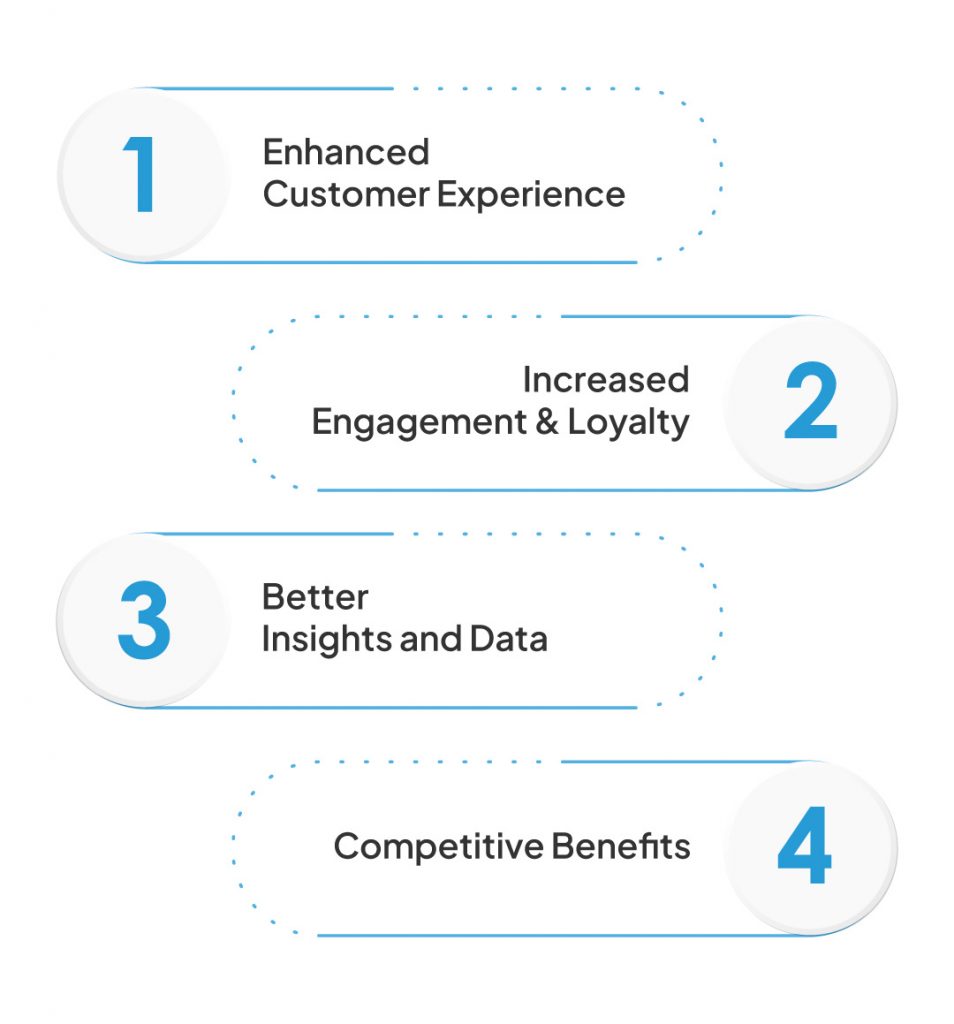
Nowadays, customers expect consistent experiences at more and more touchpoints. According to research, 73% of customers use multiple channels during shopping. Providing a consistent, personalised experience across all channels can help brands make customers happier and lower problems.
Omnichannel clients are more loyal and engaged. Compared to people who exclusively shop through one channel, they are worth more in the long run. Deeper brand relationships and support are promoted by unified experiences and consistent messaging across mediums.
Using an omnichannel strategy gives brands a more comprehensive, 360-degree view of their customers by integrating data from many customer touchpoints. These comprehensive, well-integrated analytics can help improve customer lifecycle marketing, personalization, and segmentation.
Businesses that can create seamless omnichannel experiences will stand out from the competition as customer experience becomes a crucial brand differentiation. Companies with a poor omnichannel strategy will be seen as outdated.
Every retailer has to align their solution assessment to their company objectives. Before shortlisting platforms, consider the following aspects.
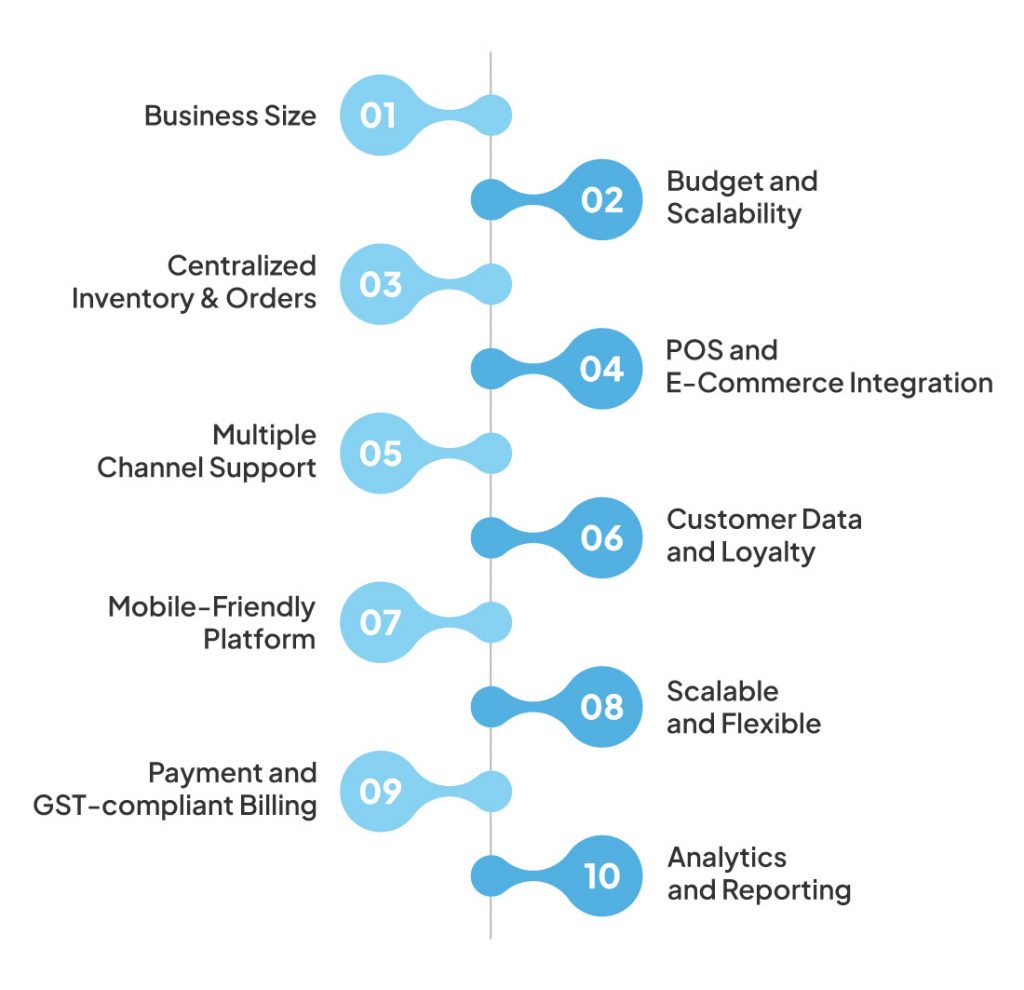
SMBs need to search for straightforward solutions that require little setup and offer excellent customer service. Businesses require advanced features like extensive analytics dashboards, multi-warehouse support, and ERP connection.
Future potential and affordability must be balanced in retail technologies. Select a platform that can accommodate new stores, internet channels, and global operations while yet staying inside your current budget.
Look for a platform that updates stock right away after every sale, transfer, or return, whether it’s online or offline, and that supports multiple warehouses and precise availability. This foundation makes it possible to do click-and-collect, ship-from-store, and marketplace fulfilment without running out of stock or having too many of the same item.
Choose solutions that connect the retail POS to the online store so that product catalogues, prices, offers, and customer profiles are always up to date. This stops deals from being different on various platforms and maintains billing and receipts in one place.
Ensure that your website, Amazon, Flipkart, social commerce, and even WhatsApp ordering is all covered, and that products, inventory, and orders are all synced up. The idea is to sell where customers buy without making things harder for the back office.
A single CRM should include profiles, purchase history, preferences, and interaction to create tailored offers and useful loyalty programs across all channels. Organising all of this data in one place makes it easier to customise, attract, and retain customers.
To ensure that experiences and operations run smoothly on any platform, look for mobile-ready solutions for employees as well as adaptable storefronts and apps for customers. Sales and service are enhanced via store associate apps and a seamless mobile checkout.
Platforms that are ready for growth can handle adding new sites, warehouses, and channels, and they let you configure them instead of building each process from scratch. Being flexible cuts down on the time it takes to get new ideas and yearly changes to market.
Indian stores need reliable payment gateway integrations at the point of sale (POS) and online checkout, as well as GST-compliant billing, automated tax calculation, and filing processes. This mix speeds up bills, cuts down on mistakes, and lowers the risk of not following the rules.
Real-time, interactive sales dashboards, inventory management, channel success, and customer metrics should help with both short- and long-term planning and daily decisions. With a complete data model, analytics show the real report across all platforms.
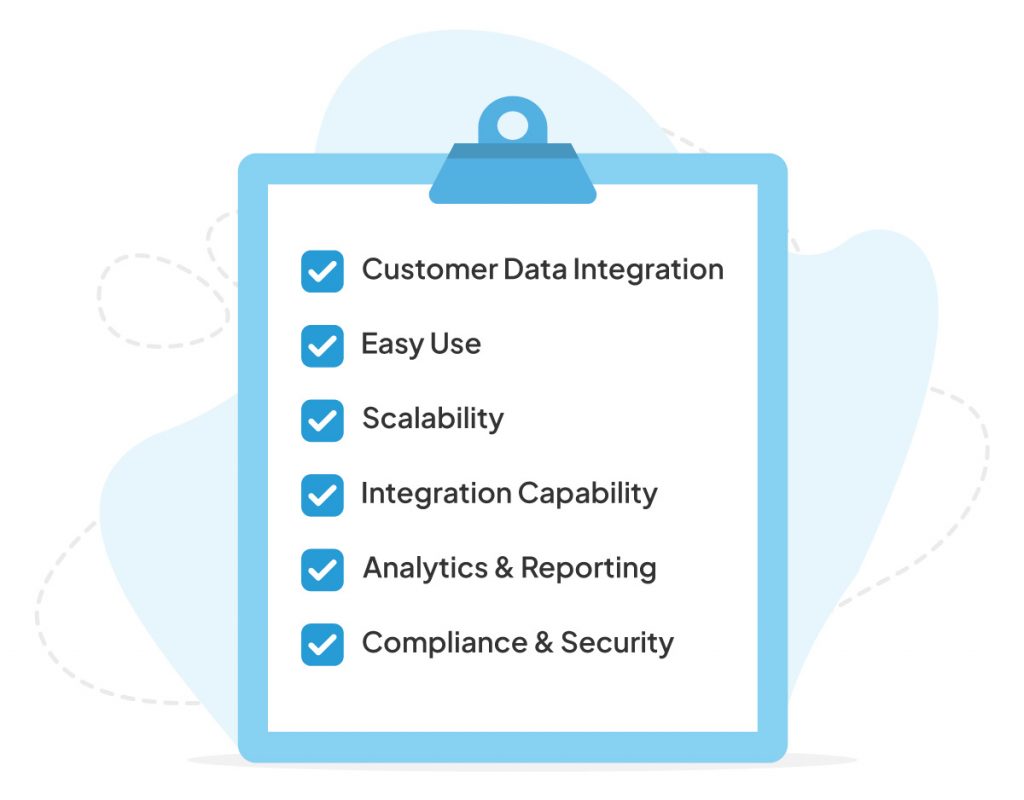
By applying this checklist, platforms that appear appealing but do not provide long-term value can be filtered out.
Retailers can be attracted by attractive features or cheaper costs, even if they are looking for the best solution for their company. Let us examine the most frequent mistakes and the reasons for avoiding them:
Many retailers choose the cheaper option. Initially, the platform will perform well, but it frequently goes down as the company expands. Imagine launching three new locations and discovering that your existing system isn’t able to manage them all. You are then forced to transfer platforms once more, which can be expensive and stressful.
A strong infrastructure is amazing, but daily operations will suffer if your employees find it too complicated. Retail platforms need to make things easier rather than more difficult. “Can my sales team, cashiers, and store managers use this system easily?” is a question you should always ask.
You will experience data silos if the new omnichannel software is unable to accurately integrate with your current accounting, POS, or ERP. For instance, there may be stock errors if sales and inventory do not match. Efficient integration results in time and cost savings.
Retailers ignore backend efficiency because of the attractive features of storefronts and customer apps. A platform will look appealing on the outside, but your team will need to do manual work if it does not automate stock updates or deliver sales information.
Instead of evaluating the platform with their actual tasks, many businesses quickly sign a contract. Possible issues can be identified early with a brief demo that includes trial orders, reports, and integrations. Ignoring this step results in unexpected errors and faults.
Following a methodical strategy will help you avoid getting confused while choosing an E-commerce omnichannel platform. The following steps will help ensure that your decision is clear and secure:
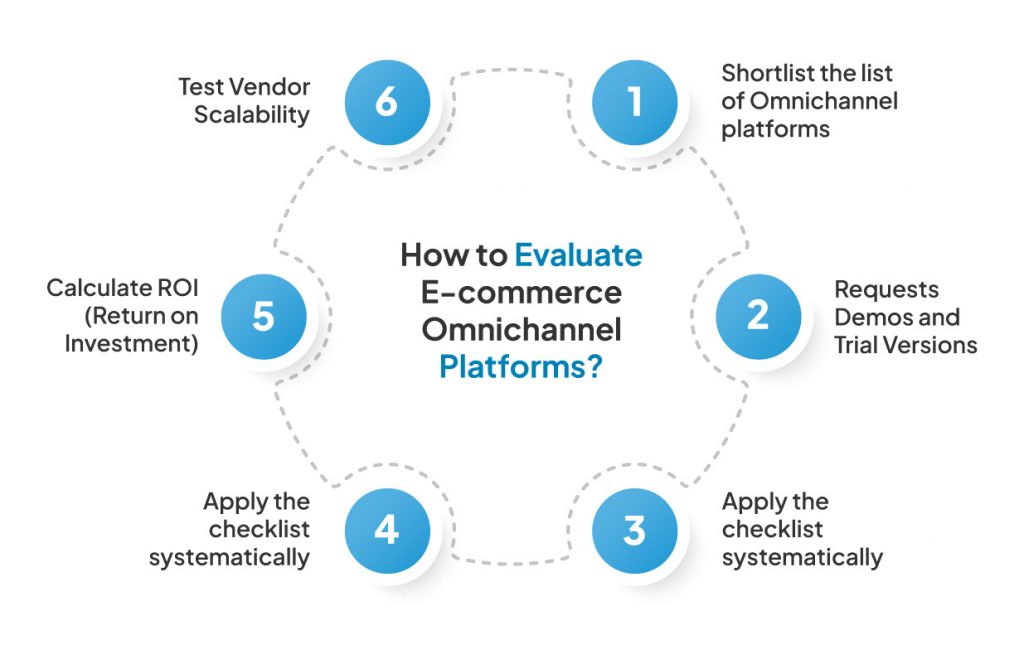
Based on your business type, budget, and key features, shortlist the list of omnichannel platforms. This helps with comparison and prevents misunderstandings.
The most effective method to determine whether a platform fits your business flow is through hands-on testing. Examine how fast you can create a new sales channel, manage inventory, and process orders.
Don’t trust initial impressions. Evaluate each platform equally using an established criteria that includes features like order management, inventory synchronization, reporting, and customer data handling.
Your IT department will examine integrations, marketing will examine consumer data, retail employees will examine usability, and finance will examine expenses. Each of these reviews is important. Decisions should not be made by a single department.
Compare the expected savings and extra income the system could generate with the license and installation costs. For example: Returns will be immediately impacted by reducing cancelled orders or saving 10 staff hours each day.
“Can this platform support multiple warehouses?” or “Will it still work smoothly if we expand internationally?” Scalability ensures you don’t outgrow the system too soon.
In 2025, choosing the best omnichannel platform requires more than just technology. it also requires integrating operations, customer service, and long-term planning. Retailers can optimise their inventory, provide consistent shopping experiences, and protect their company from shifting retail trends with the correct solution.
Before choosing the appropriate omnichannel e-commerce platform, refer to the checklist, ask your team for feedback, and follow a disciplined evaluation process. By doing this, you make sure that your next platform investment keeps your retail firm future-ready, stimulates growth, and pleases customers.
At VasyERP, we are aware that each retailer has different requirements. To help businesses expand, our omnichannel e-commerce solutions are designed to streamline inventory and billing, integrate online and offline operations, and offer insightful data.
Contact our experts to keep your retail up-to-date. Book a free demo now
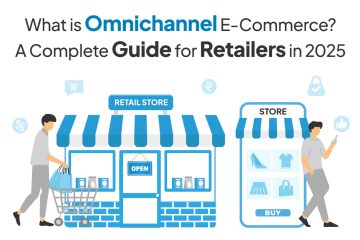
Are you also wondering what omnichannel e-commerce is? ...
September 29, 2025

https://youtu.be/dJ3RKDQriSE By 2026, eCommerce wil...
July 17, 2023
